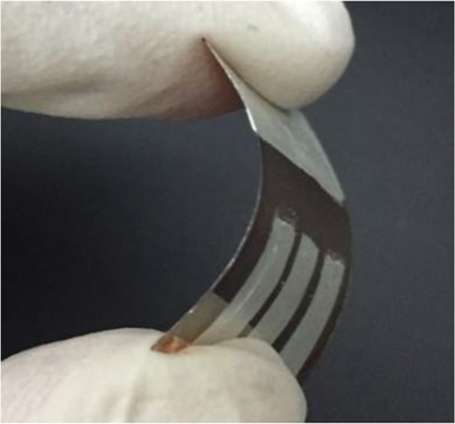All-plastic solar cell could help power future flexible electronics

If you picture a solar panel, it's most likely dark blue or black, and rigid and flat. Now imagine one that's semitransparent, ultra-thin and bendable. Scientists are closing in on making the latter version a reality. They report in the journal ACS Applied Materials & Interfaces the development of a see-through, bendable solar cell made entirely out of plastic. The device could help power the coming wave of flexible electronics.
Most solar cells you see on rooftops or in large power-plant arrays are made of relatively heavy and stiff materials. But this version doesn't lend itself to small or flexible electronics. So Yinhua Zhou and colleagues are investigating lighter-weight plastics to see if they can come up with a better way to address this need for a sustainable energy source for future gadgets.
The researchers built a solar cell by applying a conductive polymer film to a plastic surface and treating it with phosphoric acid to enhance the rate at which an electric current can pass through it. Their tiny, 10-square-millimeter (0.015-square-inch), all-plastic cell reached a voltage of 0.84 volts (a typical AAA battery produces 1.5 volts).
More information: "Conductivity Enhancement of PEDOT:PSS Films via Phosphoric Acid Treatment for Flexible All-Plastic Solar Cells" ACS Appl. Mater. Interfaces, Article ASAP DOI: 10.1021/acsami.5b03309
Journal information: ACS Applied Materials and Interfaces
Provided by American Chemical Society




















